Ten places to (not) visit on the June 2 bridge. Or rather: nine places, plus one off the list. Between the serious and the facetious, we try to point out those localities or places of culture that on the day after the long weekend holiday, ideal for a trip out of town, will be described as “stormed” by tourists, hit by overtourism, places with “kilometer-long queues” or the scene of scenes of collective hysteria.
The bank holiday Monday of the month that brings summer will likely be a repeat of what happened for Easter and Easter Monday or on the May 1 bridge, and in the newspapers we will find articles about cities in the grip of boorish tourism rather than ways to quota traffic, tourists and deseasonalize. In the 1990s there was often talk of “smart departures” when it was suggested to motorists leaving for the vacations that they should not all do so at the same time on the same day to avoid toll booth lines or heavy traffic. Same thing when one wonders why everyone would want to be at a renowned tourist resort or a world-famous museum on the same holiday: but the answer perhaps lies in the fact that any salaried worker, in order to take a little vacation without putting a dent in his vacation, takes the bridge to get away for a few days. You feel like talking to them about deseasonalizing the vacation in February -- indeed. In recent weeks, a research by the consulting firm Jfc entitled “Overtourism and tourism sustainability” was published ( mentioned by Repubblica here) where it states that many people are not interested in spending more to leave in high season: “Italians,” explains Massimo Feruzzi, founder of the company, “are willing to spend up to 32 percent more to book a vacation during the high season,” but some of the effects of tourist overcrowding are decisive because “as many as 63 out of 100 Italians give up their vacation (or change their destination) if they find traffic, unavailability in services and very full restaurants in those resorts that are now labeled as ’unlivable.’” Thus, overtourism is a deterrent more than prices, it is a boomerang that causes the attractiveness to fail, and the image damage translates into a regressive effect on bookings. On the other hand, Europeans are more discerning since “only 14 percent,” the research says, “are willing to spend more to pack in the high season and 71.2 percent are willing to change course in case of unliveability.”
Masses of people who need actions by municipal governments to manage, accommodate and regulate the flows of people and vehicles in their cities. Feruzzi states that “overtourism has an estimated cost of 2.9 euros per person per day, which, however, rises to 4.7 euros for places such as Venice, 4.5 euros for the Cinque Terre area, while it settles at 3.9 euros for Florence and 3.6 euros for the Tre Cime di Lavaredo area. Therefore, the costs that municipalities have to bear annually are considerable: for large cities of art such as Venice or Florence, an expenditure of 20 million euros is reached, which drops to a maximum of 7 million for major seaside resorts and just under 3 million euros for mountain resorts. To be considered that even small municipalities facing this emergency have to invest annual figures never less than 400 thousand euros.”
So let’s see what are some of those places to avoid on a long weekend like June 2 in order to go and visit them perhaps in the low season, with fewer people and greater enjoyability.
An evergreen of the sell-out is the Cinque Terre. In its unique natural situation, one can enjoy the beauty of an environment with splendid views of the Ligurian Sea. Paths and viewpoints overlooking the sea are not suitable for large numbers, but on festival days they are the ones that register punctually. The Park has commissioned studies to figure out how it can administer the flow of hikers in the presence of such a fragile and delicate environment and has introduced one-way traffic so that more space is not taken up during walks. An area of 4 thousand hectares that has been a UNESCO World Heritage Site since 1997 with its 130 kilometers of trails and its 5 villages made up of 4 thousand inhabitants and 7 thousand kilometers of dry stone walls, not to mention the 4.5 thousand hectares of Marine Protected Area. Faced with so much breadth of space its 4 million tourists a year are concentrated in one square kilometer, about 3 percent of the entire Park (as Finestre Sull’Arte has already discussed). With the busiest months in summer with 344 thousand arrivals in June, 345 thousand in August, 338 thousand in September. Arrivals are 85-90% concentrated between April and September, but the real criticality is about 20 days a year between weekends, bridges and holidays. More than 70 percent arrive by train, 15 percent by boat, 9 percent by car or motorcycle, and only 2 percent by tour bus, how many on foot.
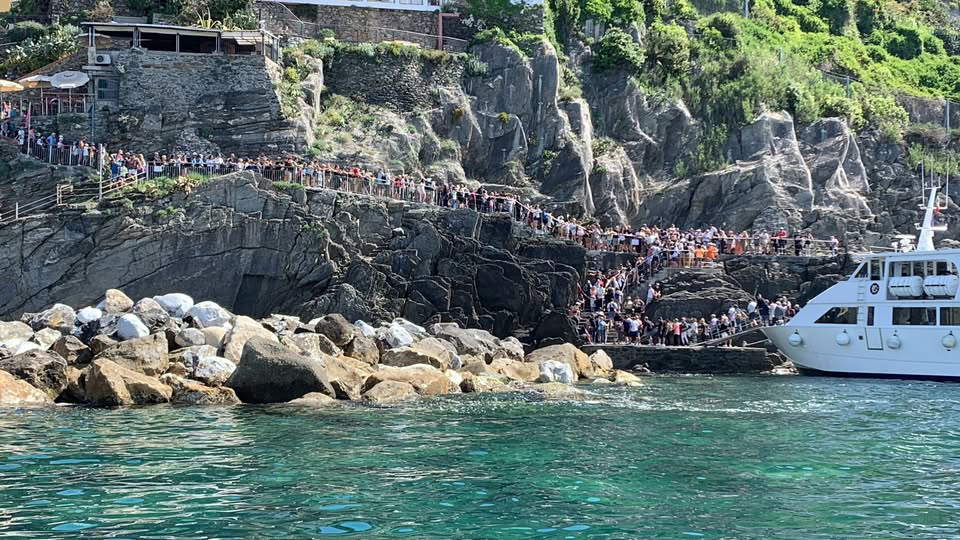
Like all state museums, the Uffizi has free admission on the first Sunday of the month. And since in Italy “free even the fever,” wanting to avoid the queues on one of these days is a losing battle at the start. If you really want to visit the Tuscan capital on June 2, change your plans and don’t put the Galleries, the Pitti Palace or the Boboli Gardens on your agenda because you could be standing in line for two hours. In the long May 1 bridge there were 114 thousand visitors over the 4 days, on Sunday to enter the Pitti Palace two hours of queuing (even with the new 25 euro ticket cost all year round). Looking for an alternative? Don’t go to the other Gallery, the Accademia, because to see the David you will not be alone. The Uffizi in 2024 recorded 5.3 million admissions placing it in second place of the most visited places of culture, while the Accademia Gallery is in fifth place with 2.2 million tickets taken out. There are other museums in Florence to visit this weekend without finding crowds.

For Republic Day, the archaeological area of the Imperial Forums and the Colosseum will be packed with people given the concomitance of the military parade with top institutional officials in the stands. The Flavian Amphitheater is by far the most-visited cultural tourist destination in the country with its 14,733,395 visitors (more than 101 million euros in receipts), and the huge multilingual and multicultural audience that throngs there makes it the setting for scenes from comedy or tragedy. Like the American tourist, of Taiwanese origin, who arrived shortly after closing time and did not want to miss his longed-for visit and decided to climb over the gates, getting stuck in the mockery. Emergency ambulance for immediate operation.
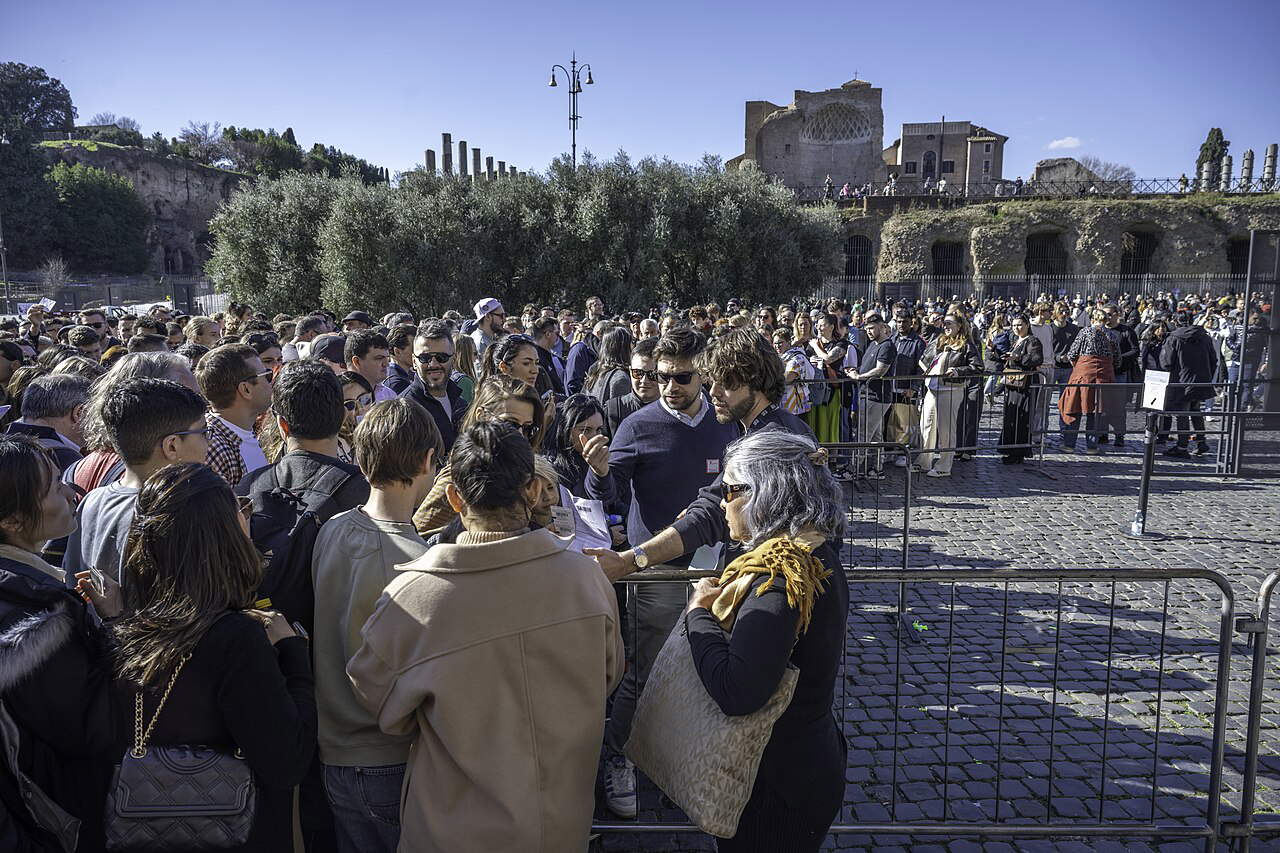
The little balcony of Romeo and Juliet’s love, though it never existed, has a simulacrum in Verona that has become a para-religious pilgrimage destination for couples and lovers so much so that the municipality has been forced to take a stand. To understand the level of the city’s forbearance had reached, one only has to go and reread what Councillor Marta Ugolini declared, and in what terms, a year ago: “Faced with the depopulation of the city and the tourism-induced rupture of social cohesion in urban centers, it is necessary to ask whose city it is.” Words like ’breaking of cohesion’ frame tourism no longer as a factor of economic gain but as an enemy. “Who has,” Ugolini continued, “the responsibility to prevent these negative effects of tourism development? Who should preserve the local community and its values? Certainly the municipal administration has a relevant responsibility for the choices but it is not alone. It is the citizens, the economic operators, and the various stakeholders who are collectively called to responsibility and awareness of the phenomenon of touristification. A phenomenon that involves the impatience of residents, especially those who do not enjoy the economic benefits of the presence of tourists, but also the worsening of the quality of the tourist experience, the overloading of infrastructure and public services as well as a displacement effect on the supply of housing for long-term rentals to residents.” ’Touristism’ and ’resident impatience’ make a good point about residents struggling with congested streets to get to the mythical courtyard. “In Verona we are experiencing a situation of overload in some places and moments, especially it is Juliet’s courtyard that is affected by forms of tourism characterized by large numbers, ritual behaviors and not always respectful of the context.” The “ritualistic disrespectful” behaviors would be the caresses given to the bronze breasts of Juliet’s statue in the courtyard, complete with a goliardic photo with the usual sexual reference (of the ne groping that consumed the bronze so much that it was pierced we have discussed here).

An icon of the Dolomites, the Three Peaks of Lavaredo are one of the most photographed and popular alpine destinations on summer and fall weekends. The path from the Auronzo Hut is easily accessible and scenic, but because of this on holiday weekends it becomes a high-altitude “procession.” The parking fee that reaches a maximum as early as 8:00 a.m. is a clear indicator of tourist pressure. In the high season, between 8 thousand and 10 thousand people a day arrive, but on the top days it exceeds 13 thousand. For flow management, the Auronzo municipality has decided on reservation-only parking from Sunday, May 25: only 700 cars will be allowed to go up after an online procedure on the municipal administration website. It will be a one-month trial, with the aim of avoiding the well-known long hour-long queues of cars, vans and minibuses looking for a spot. Accessibility has been planned by calendar, distributed by time slots and type of vehicle used, and residents, mountain guides and companions, upon registration, will be able to have dedicated accesses. The toll cost for private car access will rise to 40€, including parking at the Auronzo Refuge. For a motorcycle, the cost is 26 euros, for buses from 60 to 180 while for the vehicles of mountain guides, environmental and hiking guides, 150 euros will be charged for the entire season. Residents of the municipality 5 eurini. Active, however, the public transportation service. Underlying the measure are studies conducted by the Department of Economics of Ca’ Foscari University of Venice and the UNESCO Dolomites Foundation, which, after analyzing the natural context, calculated how a congruous number, respecting the concept of “environmental sustainability” for an ideal quality of visitation, would be 4 thousand people per day.
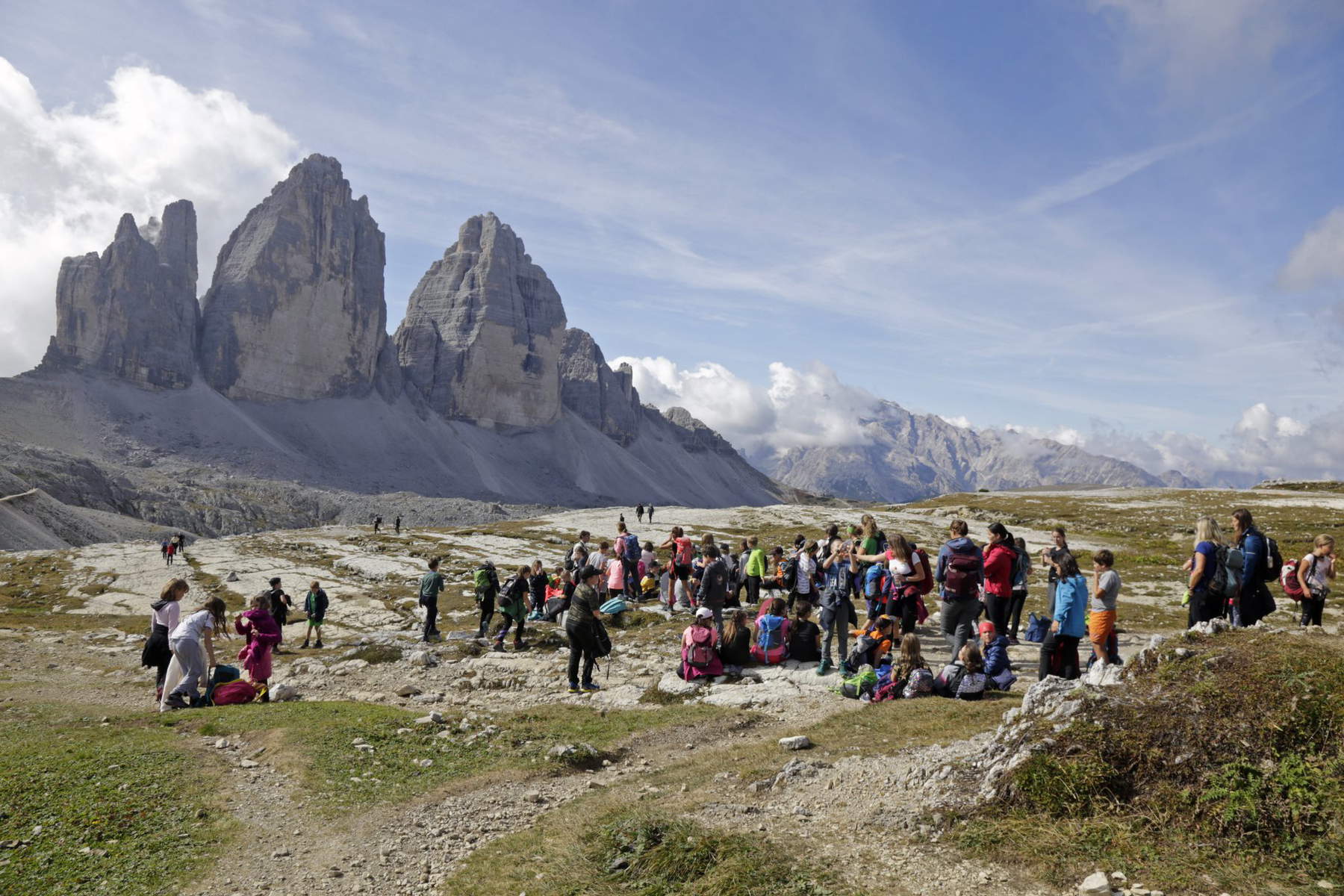
For centuries a favorite destination for cultured and international tourism, Lake Como, with its jewel-like villages such as Bellagio, Varenna, Menaggio and the capital itself, is now confirmed as one of the most iconic and sought-after places on spring and fall long weekends.Affluence during the bridges reaches very high peaks: on theweekends of April 25, May 1, June 2 or Ferragosto, peaks easily exceed 50,000 visitors per day in the main villages alone, withpacked ferries, congested traffic along the Regina highway, and saturated parking lots from early morning are the norm. Bellagio and Varenna, in particular, become almost impassable during the central hours of the day. Historic villas (such as Villa Carlotta and Villa del Balbianello) adopt reservation policies and closed numbers, but these are not always sufficient to avoid long waits or inconvenience. Some rail and lake routes are upgraded for bridges, but mobility remains an Achilles’ heel. Lake Como is one of the most emblematic examples of polarized tourism on bridges, the risk being that the experience is more of a crowd than a romantic getaway or contemplation. It is often spoken of as an “Instagrammable” place, thus ideal for photos, but on holidays the narrative folds in on itself: too much beauty concentrated in too little space and photos and reels are used to document uncomfortable situations. “Italy’s elegant reflection on the lake” with the timeless aesthetics of the villas and gardens (Villa Melzi, Villa Monastero) and the international fascination fueled by celebrities, literature (from Stendhal to Manzoni), cinema, and social media have created a tourism narrative that has focused everything on the “beautiful to live in” that is contrasted, however, with the agility on peak days.
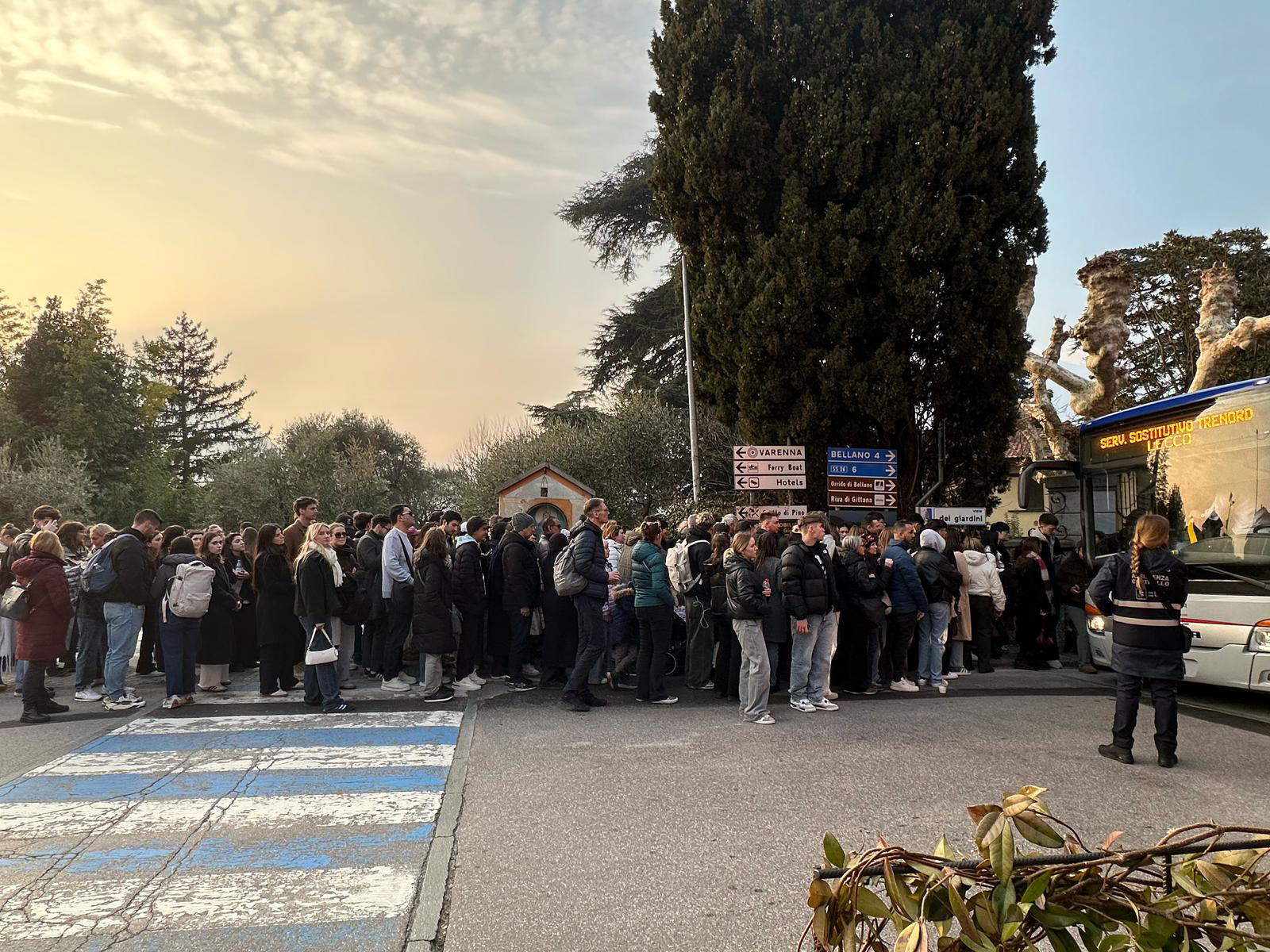
“We need a structured and coordinated management of the territory. The numbers are already pointing us to some critical issues that in the long term, if no action is taken, risk compromising our offer of excellence, especially those related to high-end hospitality.” Words from the president of the Amalfi Coast Tourist District Andrea Ferraioli after the May 1 bridge, who in particular points the finger at daily vacationers who come by private vehicle (or “minivans, minibuses and NCCs coming from Naples, Salerno, cruise ports, Pompeii and the Sorrento Peninsula and also from other provinces such as Benevento, Avellino and the Cilento”) clogging the roads. From the District they point out how, with the Jubilee, private day tour offerings from Rome have almost doubled, and even day trips to Amalfi, Positano and Ravello are arriving from Tuscany. “This model of disposable tourism produces an unsustainable impact for a small and fragile territory like the Amalfi Coast,” explains Andrea Ferraioli on the District’s website, “it floods State Road 163 from Positano to Amalfi, blocks key points like Atrani and Castiglione for hours, and at the end of the day disappears without generating any concrete benefit for the territory. What kind of experience does a visitor have who spends hours in a van, stuck in traffic on a road that lacks adequate rest areas and with a rugged, vertical conformation that does not allow room for logistical expansion? A stress for him, a disservice for those who have instead chosen to stay on the Amalfi Coast for several days.” If you, too, would like to take a June 2 touch-and-go, follow his advice: reschedule at another time or get a hotel locally to enjoy it without rushing. Knowing, moreover, that from May 1, the alternate license plate road system came into effect.
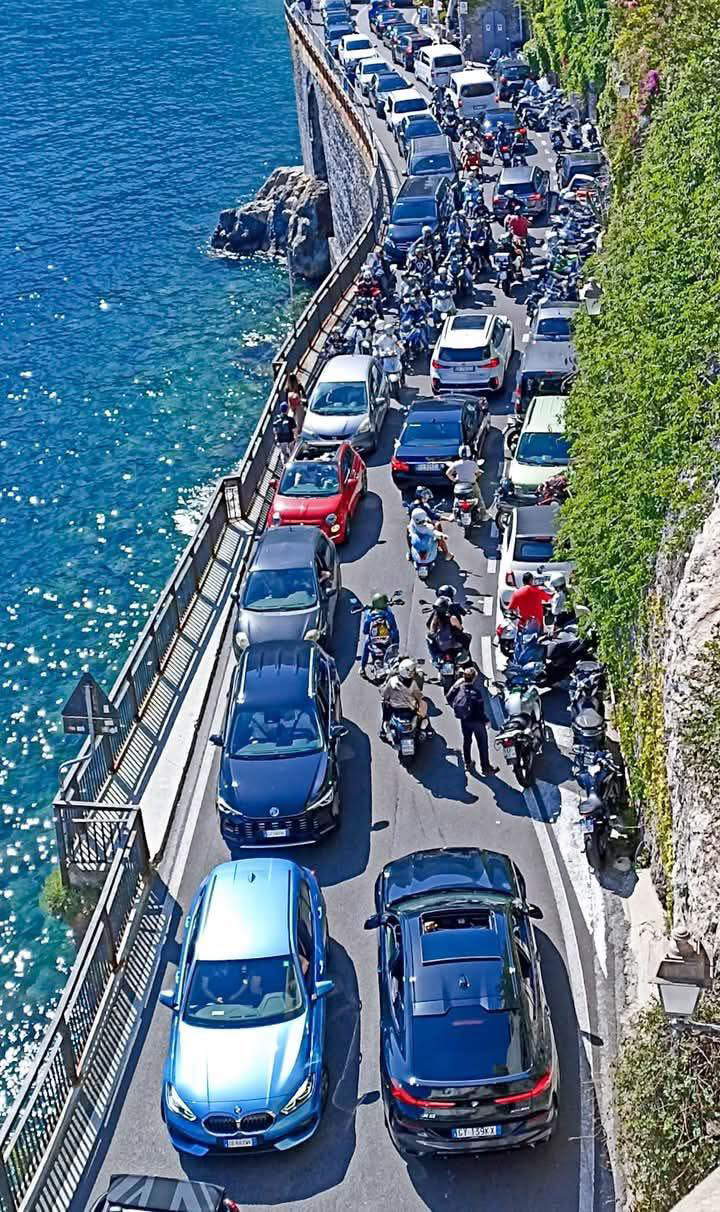
Sirmione is the pearl of lower Garda, with its Rocca Scaligera, Grotte di Catullo, thermal baths and lakeside promenade. It is a bridge destination par excellence, favored by its climate and varied offerings of culture, relaxation and gastronomy. The iconic village on Lake Garda of just 8,000 inhabitants was stormed by tourists last Friday, May 2, who completely paralyzed vehicular and even pedestrian traffic: it was physically impossible to enter the historic center due to lack of space. More than 40 minutes of waiting to cross the drawbridge, swear words and big words flew among tourists in the crush, streets clogged and impassable even for electric cars. “During the three holidays,” the mayor explained to Corriere della Sera, “we had 40 thousand more cars than during the same period last year,” and according to mobile phone-generated data collected by Confcommercio Lombardia already between Easter and Easter Monday there were 75 thousand users.

In the Rome of the Jubilee year, the emotional wave of devotion to Pope Francis has not yet subsided, and the Roman Basilica (a magnificent example of early Christian art and architecture) has been a pilgrimage destination since the day of his funeral: 45-minute lines to pay homage to him in front of his tomb.

We put Venice out of the rankings: the Serenissima, in fact, has been trying to regulate and limit precisely those overbooking dates that saw it stormed like Indians chasing stagecoach since it introduced the ticket booking system. So if you try to book and there are too many people you know you have to change course. For the time being, it is the first to have introduced such a measure, but in many municipalities that example is now being evoked as the way forward.
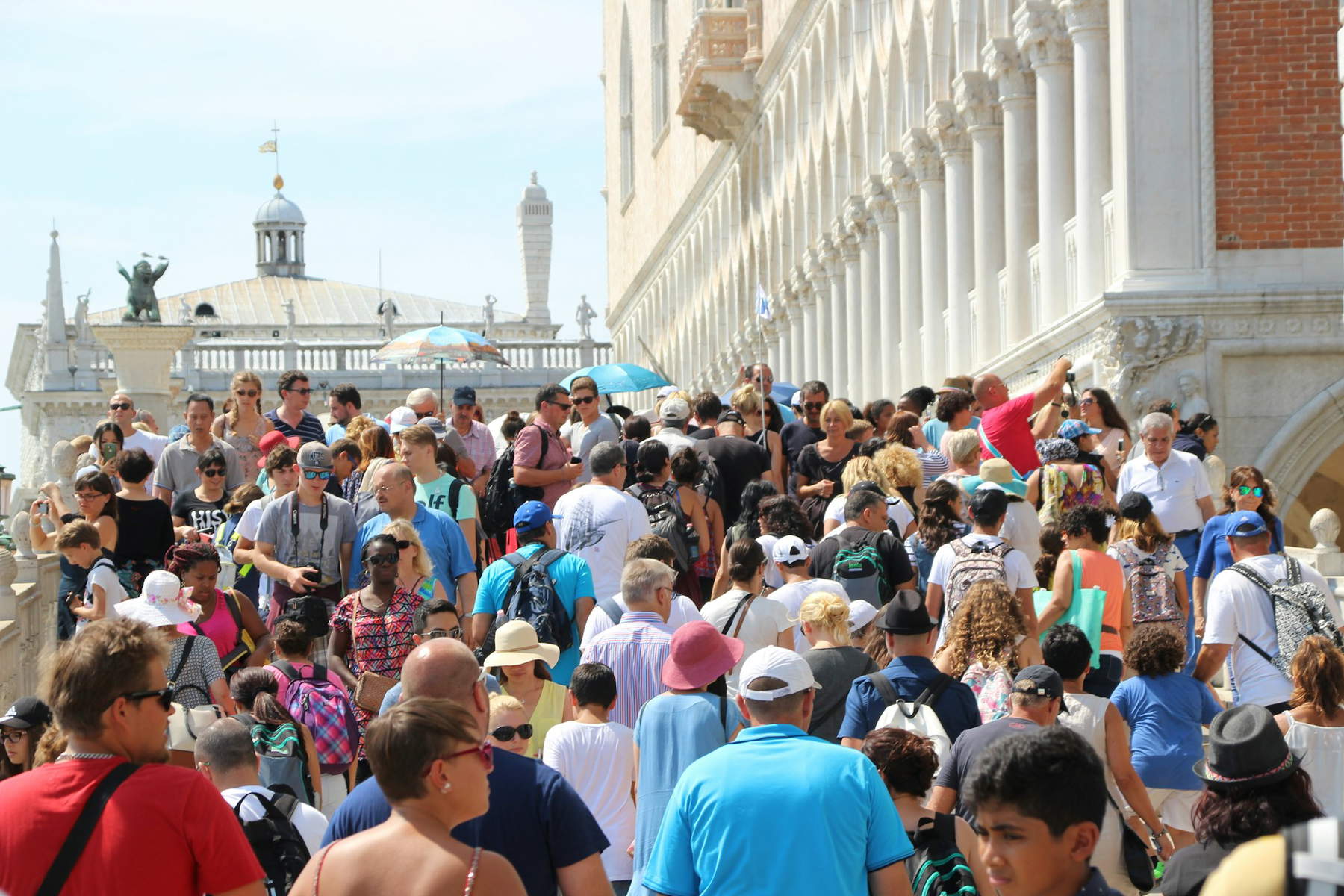
Warning: the translation into English of the original Italian article was created using automatic tools. We undertake to review all articles, but we do not guarantee the total absence of inaccuracies in the translation due to the program. You can find the original by clicking on the ITA button. If you find any mistake,please contact us.